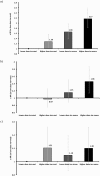Association between Insulin Monotherapy versus Insulin plus Metformin and the Risk of All-Cause Mortality and Other Serious Outcomes: A Retrospective Cohort Study
- PMID: 27152598
- PMCID: PMC4859474
- DOI: 10.1371/journal.pone.0153594
Association between Insulin Monotherapy versus Insulin plus Metformin and the Risk of All-Cause Mortality and Other Serious Outcomes: A Retrospective Cohort Study
Abstract
Aims: To determine if concomitant metformin reduced the risk of death, major adverse cardiac events (MACE), and cancer in people with type 2 diabetes treated with insulin.
Methods: For this retrospective cohort study, people with type 2 diabetes who progressed to insulin with or without metformin from 2000 onwards were identified from the UK Clinical Practice Research Datalink (≈7% sample of the UK population). The risks of all-cause mortality, MACE and incident cancer were evaluated using multivariable Cox models comparing insulin monotherapy with insulin plus metformin. We accounted for insulin dose.
Results: 12,020 subjects treated with insulin were identified, including 6,484 treated with monotherapy. There were 1,486 deaths, 579 MACE (excluding those with a history of large vessel disease), and 680 cancer events (excluding those in patients with a history of cancer). Corresponding event rates were 41.5 (95% CI 39.4-43.6) deaths, 20.8 (19.2-22.5) MACE, and 21.6 (20.0-23.3) cancer events per 1,000 person-years. The adjusted hazard ratios (aHRs) for people prescribed insulin plus metformin versus insulin monotherapy were 0.60 (95% CI 0.52-0.68) for all-cause mortality, 0.75 (0.62-0.91) for MACE, and 0.96 (0.80-1.15) for cancer. For patients who were propensity-score matched, the corresponding aHRs for all-cause mortality and cancer were 0.62 (0.52-0.75) and 0.99 (0.78-1.26), respectively. For MACE, the aHR was 1.06 (0.75-1.49) prior to 1,275 days and 1.87 (1.22-2.86) after 1,275 days post-index.
Conclusions: People with type 2 diabetes treated with insulin plus concomitant metformin had a reduced risk of death and MACE compared with people treated with insulin monotherapy. There was no statistically significant difference in the risk of cancer between people treated with insulin as monotherapy or in combination with metformin.
Conflict of interest statement
Figures






References
-
- Holden SE, Gale EAM, Jenkins-Jones S, Currie CJ. How many people inject insulin? UK estimates from 1991 to 2010. Diabetes Obes Metab. 2014;16: 533–9. - PubMed
-
- Inzucchi SE, Bergenstal RM, Buse JB, Diamant M, Ferrannini E, Nauck M, et al. Management of hyperglycemia in type 2 diabetes: a patient-centered approach: position statement of the American Diabetes Association (ADA) and the European Association for the Study of Diabetes (EASD). Diabetes Care. 2012;35: 1364–79. 10.2337/dc12-0413 - DOI - PMC - PubMed
-
- Kirpichnikov D, McFarlane SI, Sowers JR. Metformin: an update. Ann Intern Med. 2002;137: 25–33. - PubMed
-
- Beisswenger PJ, Howell SK, Touchette AD, Lal S, Szwergold BS. Methylglyoxal Metformin reduces systemic methylglyoxal levels in type 2 diabetes. Diabetes. 1999;4: 198–202. - PubMed
Publication types
MeSH terms
Substances
LinkOut - more resources
Full Text Sources
Other Literature Sources
Medical

